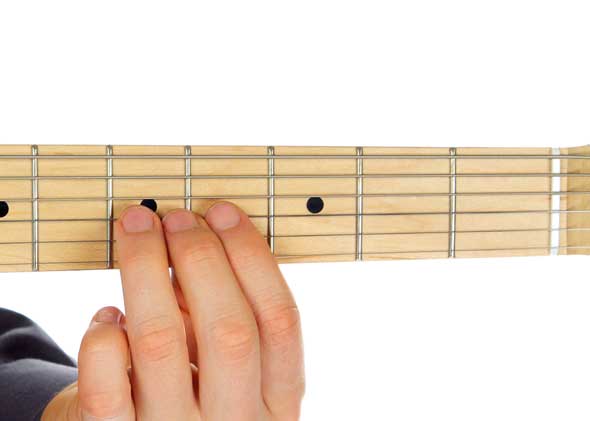
The Bend
The bend is achieved by "pushing" a string with the left hand fingers in the direction of the adjacent strings. This causes the note to rise in pitch. Notes are most commonly bent one tone (2 frets in pitch) or one semitone (1 fret in pitch). The following examples use the third finger to bend the notes. You will find bending easier if the second finger also helps "push up" the string (bending the string). The bend is indicated in tablature by a curved arrow (see ex 267) and the letter "B" above it. In music notation a slur is used to connect the bent notes, so you will need to refer to the letter B above the tab.
In the following example, the C note on the 5th fret of the 3rd string is bent up a tone to a note equivalent to the D note on the 7th fret. Experience and practice will help you bend to the correct pitch. If you use very light gauge strings on your guitar, bending will be easier.


Play note on 5th fret, 3rd string.

Third finger bends string upwards with help of the second finger.
The common notes to bend within Pattern 1 Extension are shown in the following example. The example given uses notes from Pattern 1 at the 5th position and the diagram also highlights which direction to bend each note. When improvising, you should only bend from and to a note in the pattern.

